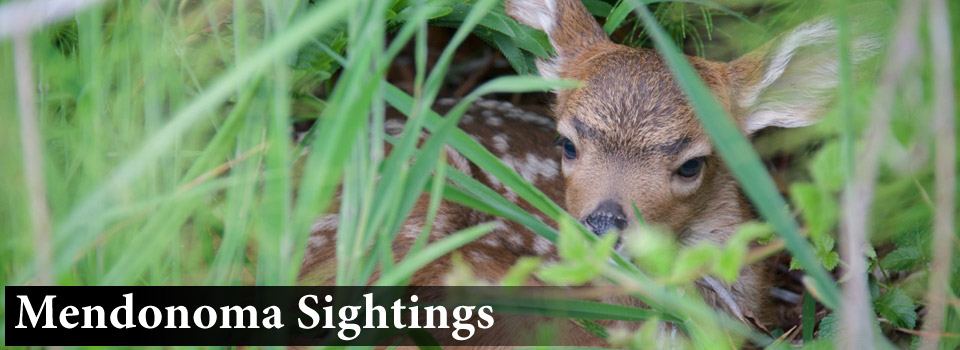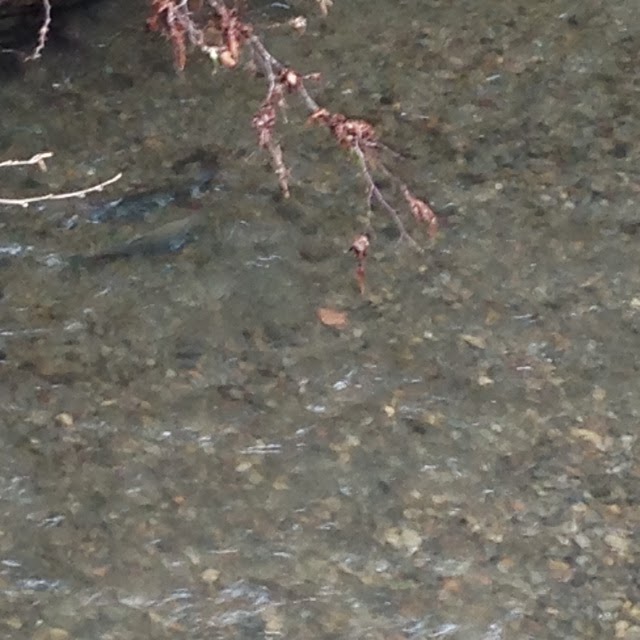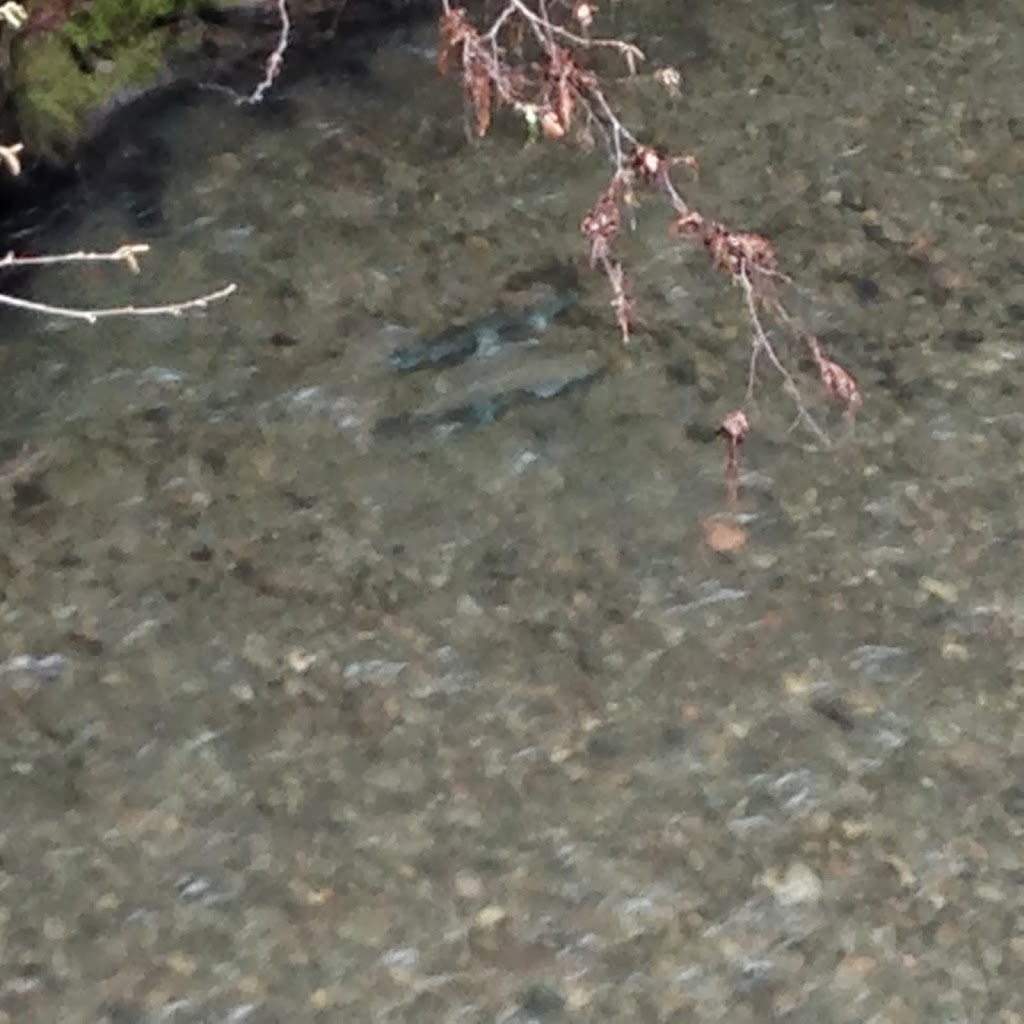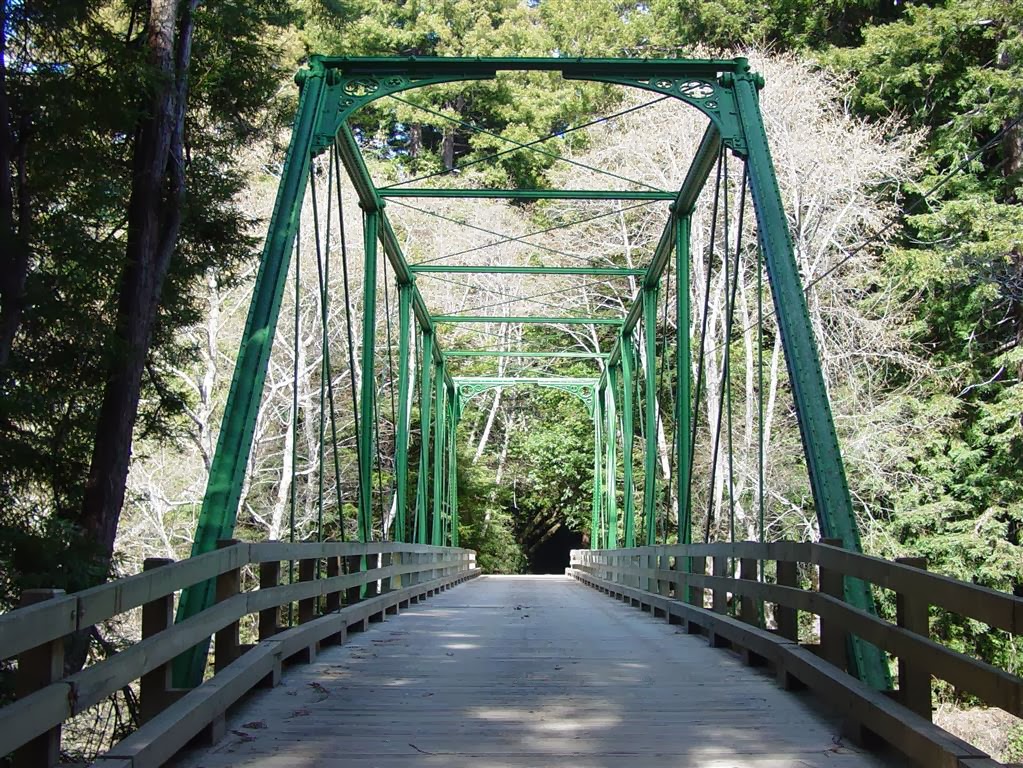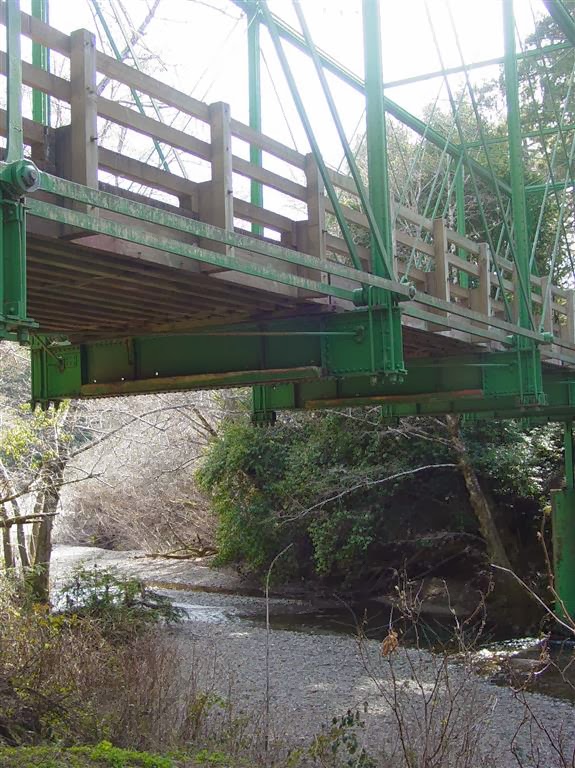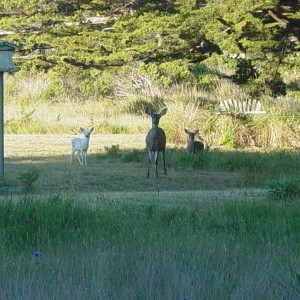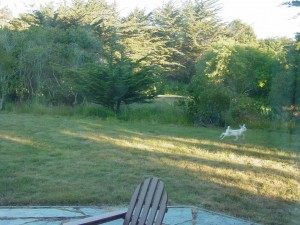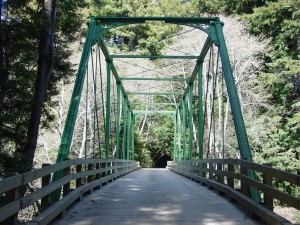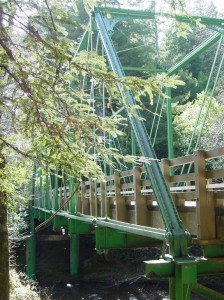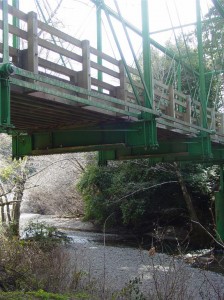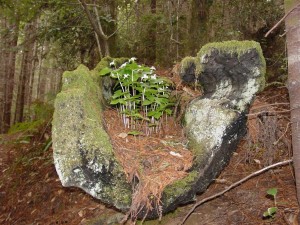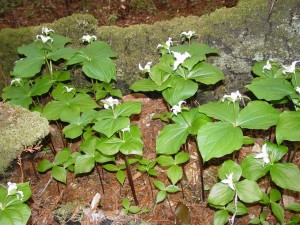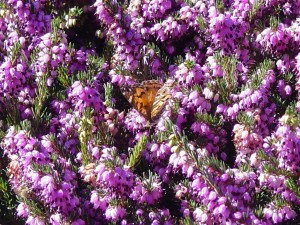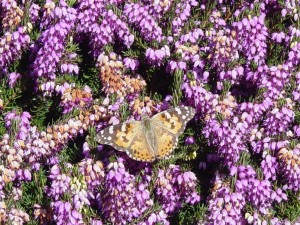The iconic "Green Bridge" is also called the North Fork Bridge or the Gualala Road Bridge. It spans a portion of the Gualala River. Kay Martin recently photographed it and researched its history.
Kay kindly wrote up the history of this beautiful bridge for our recent Gualala River Sightings event with Friends of the Gualala River. This is what she learned:
North Fork Bridge: A Brief History
The North Fork Bridge (aka Gualala Road Bridge, "Green" Bridge) was built in 1880 by the Phoenix Bridge Company of Phoenix, PA. It is referred to as an Iron Pratt Through Truss Bridge, made with cast iron tubes for its compression members and straps for its tension members. It is 130 feet in length and noteworthy for its major decorative detail and patented Phoenix column. Designed initially for railroad use, bridges of this type were made disassembled and shipped all over the world for assembly. This design feature allowed them to be moved from one site to another through time.
The travels of the North Fork Bridge are documented. It appears to have been initially shipped to Smith River, CA (about 30 miles north of Crescent City), where it served as a lumber mill railroad bridge. In 1909 it was moved to a lumber mill in Northwood, CA (between Monte Rio and Guerneville), and served as a railroad bridge spanning the Russian River. Finally, in 1941, it was moved to its current location on the Gualala River and converted to automobile use as a replacement for earlier bridges that had washed away.
The North Fork Bridge has two "sister" bridges in Sonoma County of identical design that were also made in 1880 by the Phoenix Bridge Company. One spans Big Sur Creek (at Geysers Road), and the other Haupt Creek (on Skagg Springs Road). The two sister railroad bridges were apparently also moved to Sonoma County from the Smith River site in 1909, although their interim relocation sites are not noted. According to CalTrans, the Haupt Creek bridge was erected at its current location and converted to automobile use in 1937.
Sources:
Susan M. Clark, Sonoma County Bridges: Thematic District, Historical Resources Survey, CA Department of Parks & Recreation, 1993.
Independent Coast Observer, The Picture Page, Issue Two, January 1972.
George Bush, personal communication.
Thanks to Kay for allowing me to share her photos and her history of this beautiful green bridge.
